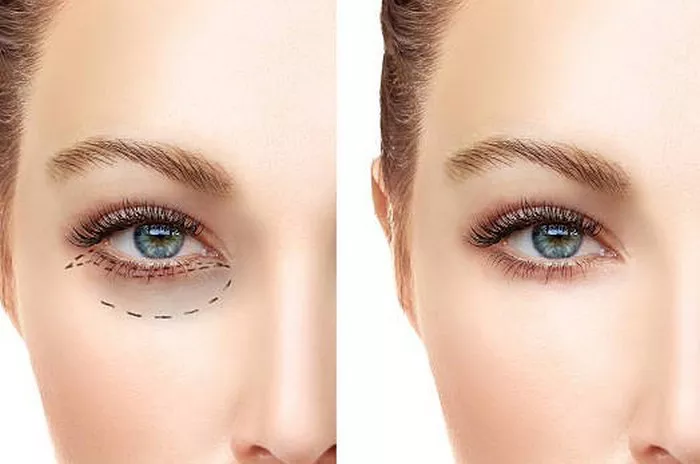Lower eyelid surgery, also known as lower blepharoplasty, is a cosmetic procedure aimed at rejuvenating the lower eyelids by addressing concerns such as under-eye bags, puffiness, excess skin, and wrinkles. This surgical intervention can help individuals achieve a more youthful and refreshed appearance. In this article, we will delve into the details of how lower eyelid surgery is performed, highlighting the key steps involved in the procedure.
Understanding Lower Eyelid Surgery
Lower eyelid surgery is a surgical procedure that involves removing excess skin, fat, and muscle from the lower eyelids to address various aesthetic concerns. It is commonly performed to eliminate under-eye bags, reduce puffiness, tighten loose skin, and smooth out wrinkles in the lower eyelid area.
The surgery can be customized based on each patient’s specific needs and goals. Depending on the individual’s unique anatomy and desired outcome, the surgeon may employ different techniques, such as traditional blepharoplasty, transconjunctival blepharoplasty, or a combination of both.
Initial Consultation and Pre-operative Preparation
Before undergoing lower eyelid surgery, it is essential to schedule an initial consultation with a qualified and experienced plastic surgeon. During this consultation, the surgeon will evaluate your medical history, perform a thorough examination of your eye area, and discuss your goals and expectations for the surgery. They will assess factors such as skin elasticity, fat distribution, and the presence of any underlying conditions that may affect the procedure.
The surgeon will explain the surgical technique that best suits your situation and answer any questions or concerns you may have. They will also provide detailed pre-operative instructions, including guidelines on medication use, smoking cessation, and other preparations to optimize the safety and success of the procedure.
Anesthesia Administration
Lower eyelid surgery is typically performed under local anesthesia with sedation or general anesthesia, depending on the complexity of the surgery and the patient’s preference. Anesthesia ensures that the patient remains comfortable and pain-free throughout the procedure.
During the consultation, the surgeon and anesthesia team will discuss the anesthesia plan with you and address any specific concerns or requirements you may have. They will explain the benefits and potential risks associated with each option, helping you make an informed decision about the type of anesthesia that suits you best.
Surgical Techniques
-
Traditional Blepharoplasty
In a traditional lower eyelid surgery, an incision is made just below the lash line. The length and placement of the incision may vary depending on the extent of correction needed and the surgeon’s preferred approach. Through this incision, the surgeon carefully removes excess skin, fat, and muscle. They may also reposition or redistribute fat to achieve a smoother, more youthful contour. Once the necessary adjustments are made, the incision is meticulously closed with sutures or tissue adhesive.
-
Transconjunctival Blepharoplasty
Transconjunctival blepharoplasty is a less invasive technique that is suitable for patients with minimal excess skin and primarily concerns the removal or redistribution of fat. In this approach, the incision is made on the inside of the lower eyelid, eliminating the need for an external incision and visible scarring. Through this incision, the surgeon accesses the underlying fat pads, which can be selectively removed or repositioned to reduce under-eye bags and puffiness. This technique does not involve removing excess skin but focuses on addressing fat-related concerns.
Additional Procedures and Complementary Techniques
In some cases, the surgeon may recommend additional procedures or complementary techniques to enhance the results of lower eyelid surgery. These may include:
- Canthopexy or canthoplasty: These procedures involve tightening or repositioning the outer corner of the eyelids to improve eyelid support and prevent complications such as lower eyelid malposition or ectropion.
- Laser resurfacing: Laser resurfacing can be performed in conjunction with lower eyelid surgery to improve skin texture, reduce fine lines, and enhance overall skin quality.
- Injectable fillers or fat grafting: Fillers or fat grafting may be used to add volume and smooth out any remaining hollows or wrinkles in the tear trough area, further improving the overall appearance of the lower eyelids.
Recovery and Aftercare
After the surgery, the surgeon will provide detailed post-operative instructions to promote optimal healing and minimize potential complications. These instructions may include:
- Eye care: The surgeon will prescribe eye drops or ointments to keep the eyes lubricated and minimize dryness or discomfort.
- Cold compresses: Applying cold compresses to the treated area can help reduce swelling and bruising in the initial days following the surgery.
- Head elevation: Keeping the head elevated while resting or sleeping can aid in reducing swelling and promoting proper blood circulation.
- Avoidance of strenuous activities: It is important to avoid activities that may strain the eyes or increase blood pressure during the initial stages of recovery.
- Follow-up appointments: Regular follow-up appointments will be scheduled to monitor your progress, remove any sutures, and address any concerns you may have during the healing process.
Conclusion
Lower eyelid surgery is a surgical procedure aimed at rejuvenating the lower eyelids and addressing concerns such as under-eye bags, puffiness, excess skin, and wrinkles. It involves the removal or repositioning of fat, muscle, and skin to achieve a more youthful and refreshed appearance. By understanding the various techniques involved, carefully selecting a qualified surgeon, and following the recommended pre-operative and post-operative instructions, individuals can undergo lower eyelid surgery with confidence, knowing that they are on the path to achieving their desired aesthetic outcome.


